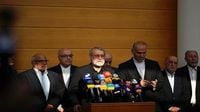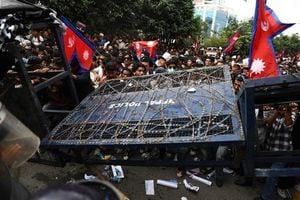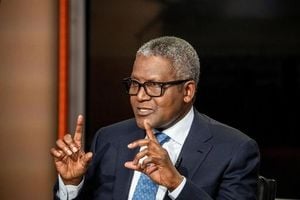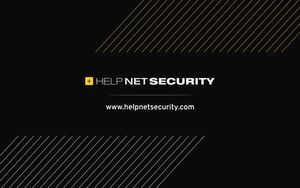Ali Larijani, Iran’s Secretary of the Supreme National Security Council, landed in Beirut on September 27, 2025, with a message that has sparked outrage back home and reignited debate about the regime’s priorities. "We are following up on the reconstruction of destroyed homes in Lebanon, and we must negotiate with the Lebanese government," Larijani declared, as reported by regime-run Khabar Online. The timing of his visit—coinciding with the anniversary of Hezbollah leader Hassan Nasrallah’s death—was no accident, and the statement was anything but routine diplomacy.
This latest pledge to support Lebanon’s rebuilding efforts is emblematic of a broader policy that, critics say, sacrifices the welfare of ordinary Iranians to sustain Tehran’s regional proxies. According to estimates cited by the National Council of Resistance of Iran (NCRI), the Iranian government spends hundreds of millions of dollars annually on Hezbollah alone. Meanwhile, Iran’s own economic situation continues to deteriorate: inflation has soared past 50%, youth unemployment is at crisis levels, and more than 60% of the population now lives below the poverty line. As one ordinary Iranian told RFE/RL’s Radio Farda, “Inflation is out of control, and with the sanctions back, prices are bound to rise.”
Larijani’s promise in Beirut is more than a diplomatic gesture—it’s a flashpoint in a mounting class war that pits the regime’s regional ambitions against the basic needs of its own citizens. While Iranian officials frame these expenditures as necessary for regional influence and security, millions of Iranians struggle to secure even the basics. Official reports from the Central Bank and the Statistical Center of Iran confirm a grim reality: an ordinary worker would need to labor for over a century to afford a modest home. In Tehran’s outskirts, families survive in makeshift shacks, lacking clean water and sanitation, while provinces like Sistan and Baluchestan endure seasonal floods and sandstorms that displace thousands—without government relief. When people protest these conditions, the response is more often repression than assistance.
As if these hardships weren’t enough, the return of United Nations sanctions—snapping back over the weekend prior to September 30, 2025, after being lifted under the 2015 nuclear deal—has deepened Iran’s isolation and economic woes. Iranian officials have decried the move as “illegal” and insist the public will endure, but the mood on the street tells a different story. “Curse those who brought us into this situation,” lamented one woman to Radio Farda, reflecting a widespread sense of betrayal and frustration among ordinary Iranians.
The newly reinstated UN sanctions target Iran’s military and nuclear programs, imposing a full arms embargo, bans on missile and nuclear technology transfers, asset freezes, and travel restrictions for key officials. All UN member states must now halt weapons and sensitive technology sales to Iran and block financial transactions tied to its nuclear and missile programs. While the direct economic impact may be limited—given that U.S. and EU sanctions have already choked Iran’s oil exports and global financial access—the UN measures further constrain Iran’s ability to import arms legally and attract foreign investment. Strategically, the sanctions bite even harder, slowing Iran’s missile and nuclear advances and restricting its diplomatic options with both world powers and regional rivals.
Inside Iran, opinions about these developments are sharply divided along political lines. Conservative media, like Hamshahri (closely linked to Tehran Municipality), downplay the impact of sanctions, warning the public not to be swayed by what they call “propaganda.” Chief editor Mohsen Mahdian wrote, “The enemy is trying to rebrand the same old sanctions through propaganda, making them seem larger and more threatening in people’s minds than they actually are.” The hard-line judiciary has echoed this stance, with the Tehran Prosecutor’s Office warning the media to avoid reporting that could “undermine the public’s sense of security,” threatening “appropriate action” for violations.
Reformist commentators, on the other hand, question the wisdom of Western demands—such as reducing Iran’s missile range—arguing that such concessions would amount to “complete surrender” and increase the risk of war. Kiumars Ashtari wrote in Sharq, “Reducing missile capabilities would mean complete surrender and increase the risk of war.” This debate highlights a fundamental divide: while some call for resilience and defiance, others see the current path as a dead end, with ordinary Iranians paying the price for geopolitical ambitions and entrenched corruption.
The human toll of these policies is hard to overstate. Inflation reached 42.4% in August 2025, forcing families to change how they save and spend. A local man explained, “People change how they save and how they indulge themselves. This puts pressure on markets like gold and the dollar, driving prices up and affecting everything else. In the end, this behavior keeps money from flowing back into the economy.” Decades of sanctions and mismanagement have created a cycle where the burdens fall hardest on the public, while systemic problems remain unaddressed.
Larijani’s Beirut remarks have only fueled public anger at home. Regime mouthpieces scrambled to clarify that Lebanon would carry out its own reconstruction, but few were convinced. For many Iranians, these evasions only underscored the scandal: their leaders appear more invested in supporting Hezbollah than in solving domestic crises. The NCRI put it bluntly: “Every rial spent on Hezbollah is stolen from Iranian workers, farmers, and families who struggle daily for bread, housing, and medicine.”
This sense of betrayal has become a rallying cry for those demanding change. The Iranian people, the NCRI argues, “have had enough. Their voice is clear: no to betrayal, no to imposed poverty.” After 46 years of rule, the regime’s strategy of prioritizing regional proxies over citizens’ welfare has left a permanent stain—one that, critics say, will not be erased until the system itself is overthrown.
As Iran faces renewed sanctions, deepening poverty, and growing unrest, the regime’s balancing act between foreign adventures and domestic stability looks increasingly precarious. The coming months will test whether the government can maintain its grip amid mounting internal and external pressures, or if the calls for change from ordinary Iranians will finally break through the wall of repression and propaganda.




